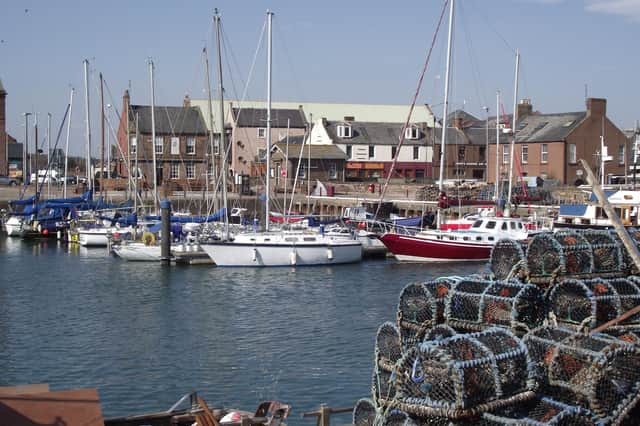Gable Ender - Angus was a different world when the Queen came to the throne


The 1950s were still a struggle for many, with numerous families still living in poor conditions with outside toilets and other shared facilities. That said, television had arrived and many Angus folk bought their first set to view the Coronation in 1953. Of course, younger readers may not appreciate that back then there was only one channel, broadcasting a grainy black and white image.
It was also the age before supermarkets really arrived and products such as biscuits and sweets were sold loose and handed over to the customer in a paper bag.
Advertisement
Hide AdAdvertisement
Hide AdSweet rationing, brought about by World War II, was not completely relaxed until February 5 1953, yet the Arbroath Year Book for 1952 lists 116 confectioners including branches of the Arbroath Co-operative Society, which had 12 outlets, and F W Woolworth.
So much has changed in the local economies during the last 70 years. The Arbroath Year Book lists 25 bakers, 20 butchers, seven banks, 26 newsagents, eight coal merchants and four chimney sweeps plus two electric sweeps. There were also 22 dairies and 15 drapers, along with 10 tea merchants. Fishing, of course, played a huge part in the economy of the town, with 13 fish merchants and salesmen, and the same number of fishmongers, supplied no doubt by the 38 locally registered boats. Changed days indeed.
There were other trades that have disappeared altogether, certainly locally. Thomas Watt, 214 High Street was a saddler and harness maker, while Edward Stephen, Dickfield Works, Dickfield Street was listed as a pickle manufacturer.
Textiles were an important part of local industry too. Three bleachers were listed and flax spinners mentioned were David Corsar & Sons at Almerie Close and Orchard Mills, D Fraser & Sons, Wellgate Works, Alexander Nicol & Co, Chalmers Street Works and Francis Webster & Sons at Alma Works and Burnside Mill, all now simply history.
Advertisement
Hide AdAdvertisement
Hide AdThe Year Book also mentions Servants’ Registry Offices at two locations but I have no information about the services they would have provided. Perhaps a reader or readers can enlighten me.
All of the economy was run on old money and I can tell you that a stamp, no first or second class in those days, cost 2½d, a fraction more than one pence today